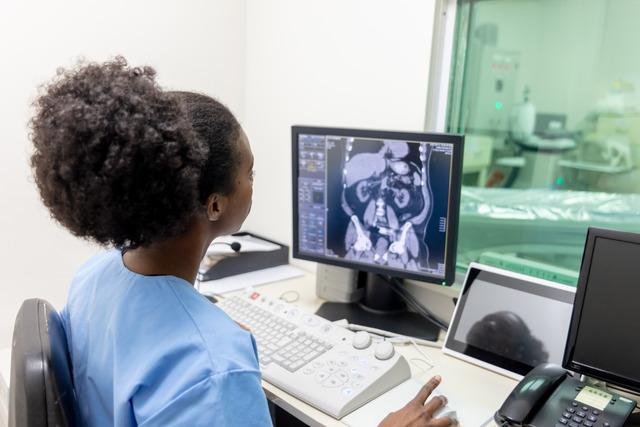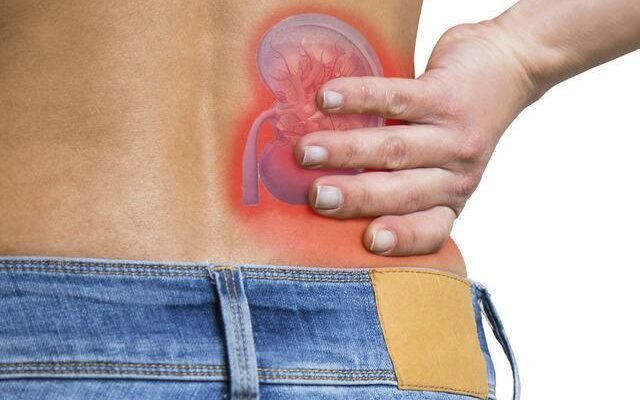Dr. from the Department of Urology. Lecturer Member Boz said, “Kidneys are responsible for removing waste products from the blood during body functions. During the cleansing of the blood, deposits consisting of minerals and salts form kidney stones. Although many kidney stones have been described, the most commonly observed stones are calcium stones, uric acid stones, infection stones, which we call struvite, and cystine stones, depending on the chemical structures of the minerals and factors that form kidney stones. “Although the incidence of stones varies depending on geographical, climatic, ethnic, nutritional and genetic factors, on average, one in 10 people will be diagnosed with kidney stones once in their lifetime,” he said.
BE CAREFUL FOR URINE BURNING, BACK AND GROIN PAIN
Pointing out that kidney stones do not cause symptoms in the early stages, Dr. Lecturer Member Boz said, “Kidney stones usually show symptoms when they enter the urinary tract, which is a tube in the form of a ureter between the kidneys and the bladder. The most important symptom of kidney stones is pain at the points where the kidneys and ureters are located, in the back on both sides of the spine, under the ribs, in the lower abdomen and in the groin. “In addition to pain, there may also be burning in the urine, blood in the urine, frequent urination, difficulty urinating, nausea or vomiting, and high fever in cases accompanied by infection,” he said.
“PERSONS WHO HAVE KIDNEY STONE AT CHILDREN AND YOUNG AGES MAY REPEATE”

Speaking about people in the risk group, Dr. Lecturer Member Boz said, “Kidney stones are more common in people with a family history. It may recur, especially in children and young people who have kidney stones. Nearly half of people who have previously had kidney stones may develop them again. Lack of sufficient water in the body is an important factor in the formation of kidney stones. Those who live in hot climates, work in high temperatures, and sweat a lot are also at risk. A diet high in protein, sodium or sugar and low in fiber may predispose to kidney stones. Increasing salt consumption increases calcium excretion from the kidneys and significantly increases the risk of kidney stones. The risk may increase in those who have had digestive system surgery and are overweight. Disorders that cause increased levels of cystine, oxalate, uric acid or calcium in the urine increase the risk. “Medications used to reduce fluid accumulation in the body, calcium-based antacids, some antibiotics and medications, and long-term use of vitamin D and calcium supplements may predispose to stone formation,” he said.
“VERY SMALL STONES CAN ALSO CAUSE SEVERE PAIN”

Dr. Lecturer Regarding kidney stone diagnosis and treatment methods, Member Boz said, “Computed Tomography (CT) is the most effective imaging method in determining the location and size of even very small stones in the kidney or urinary tract. In addition to CT, other radiological imaging methods such as Ultrasonography, Plain Urinary System Radiography and Intravenous Pyelography can also be used to detect stones. Treatment decisions are made depending on conditions such as the size, number and location of the stone, the effect on kidney functions, the obstruction status of the stone, the presence of infection, additional diseases and medication use. Although stones smaller than 5-6 mm can be expelled from the urinary tract spontaneously, very small stones can also cause severe pain. In people who do not have a single kidney and whose kidney functions are not affected, the patient can wait a few days with painkillers, supplements to facilitate the passing of the stone, increasing fluid intake, applying a hot water bottle to the painful points in a way that does not cause burns on the skin, and if possible, performing hopping and jumping movements to facilitate the passage of the stone. ” said.
3 MOST FREQUENTLY APPLIED METHODS
Pointing out that there are different treatment methods for stones that are too large or small to pass through the urinary tract but have not passed, Dr. Lecturer Member Boz listed the most frequently used methods as follows:
“Extracorporeal Shock Wave Stone Therapy (ESWL): Sound waves that create strong vibrations are used to break up kidney or ureter stones from outside the body, without the need for anesthesia, except in the pediatric age group. The broken stone pieces are eliminated from the body through urine. Although it is suitable for stones smaller than 1.5 cm, the process may take 30-45 minutes depending on the size of the stone, its location and the device used. It is not recommended for those using blood thinners.

Ureteroscopy (Retrograde Intrarenal Surgery-RIRC): With this method, which is applied under waist anesthesia or general anesthesia depending on the location of the stone, stones located in the ureter and kidney are entered from the end of the urinary tract and broken with a laser, and the stones are removed from the urinary tract or collected in small pieces. One of its biggest advantages is that the procedure is performed through the urinary canal without making any surgical incisions. In this way, patients can return to their home and social lives in a short time. Its applicability to patients with bleeding disorders or using blood thinners, who are obese, or who have skeletal disorders are very important advantages.
Percutaneous Nephrolithotomy (PNL) surgery: PNL, performed under general anesthesia, is used in the treatment of complex kidney stones larger than 2 cm. The patient is placed face down on the operating table. A tube is placed in the kidney by accessing it through a small incision in the back area. One end of the tube is left outside the skin and the stone is reached by passing an optical camera called a nephroscope and instruments that will break or remove the stone. Stones that are large enough to be removed are removed from the inserted tube. Kidney stones that are too large to be removed are removed by breaking them with pneumatic, ultrasonic or laser energy. On the other hand, laparoscopic and open surgical methods can also be applied in very selected cases.
“REDUCING DAILY SALT CONSUMPTION REDUCES THE POSSIBILITY OF KIDNEY STONE FORMATION”

Dr. Lecturer Member Boz said, “Since the causes of kidney stones are different, personalized recommendations are made for people whose stone analysis has been performed and the structure of the stone has been determined. Consuming sufficient amounts of water throughout the day, over time, is the first priority in preventing kidney stone formation. A clear urine color is a sign that sufficient water is consumed. Reducing daily salt consumption reduces the possibility of kidney stone formation. Sodium, found in salt, is found in many canned and packaged ready-made foods. It is not a correct approach for those with calcium oxalate stones, the most common type of stone, to completely cut out calcium. Since calcium is necessary for healthy teeth and bone structure, it should not be restricted without a doctor’s advice. In addition to increasing fluid consumption, patients with calcium oxalate stones; A diet limited to some nuts and green leafy vegetables and fruits may be preventive. Hazelnuts, almonds, peanuts, cashews, leeks, parsley, celery, spinach, wheat bran, beet root, asparagus, strawberries, chocolate and soy products should be avoided. Excessive consumption of animal protein can trigger the formation of uric acid stones. It is important to consume limited animal protein. “Consumption of pomegranate, grapes, apple, watermelon, basil and celery is effective in preventing stone formation,” he said. (DHA)

